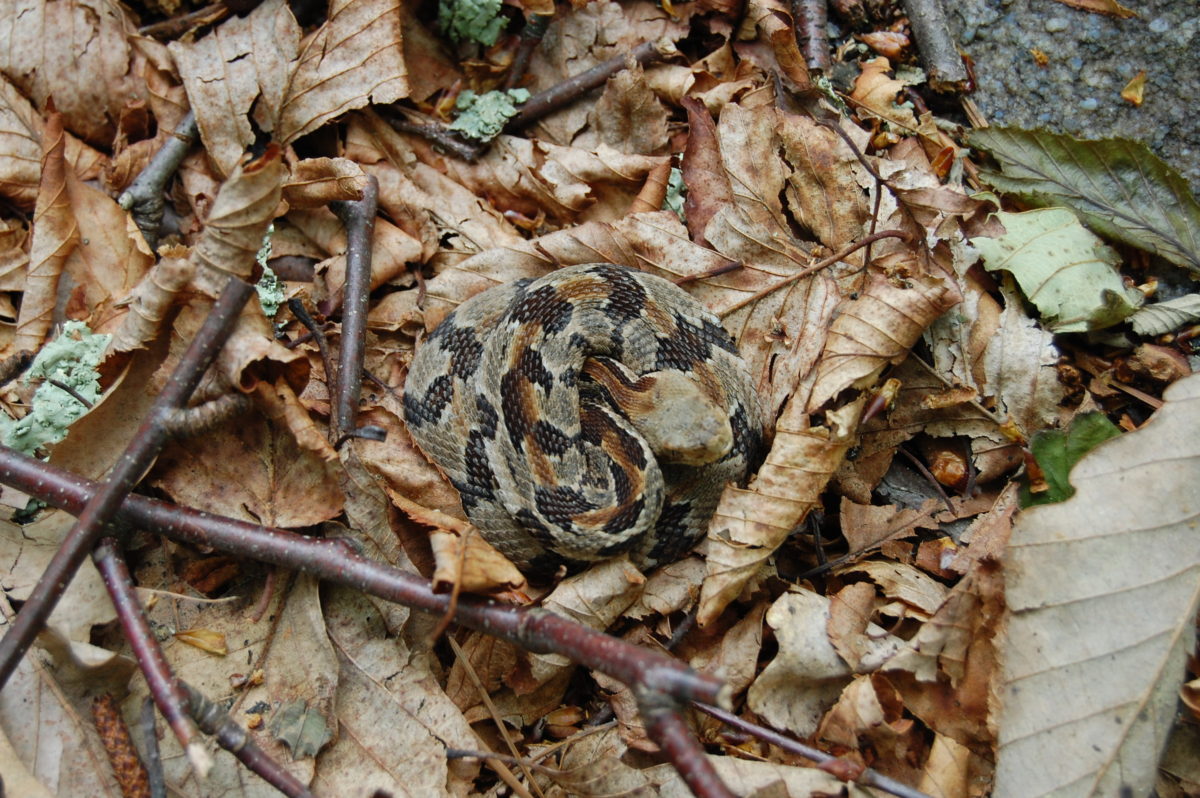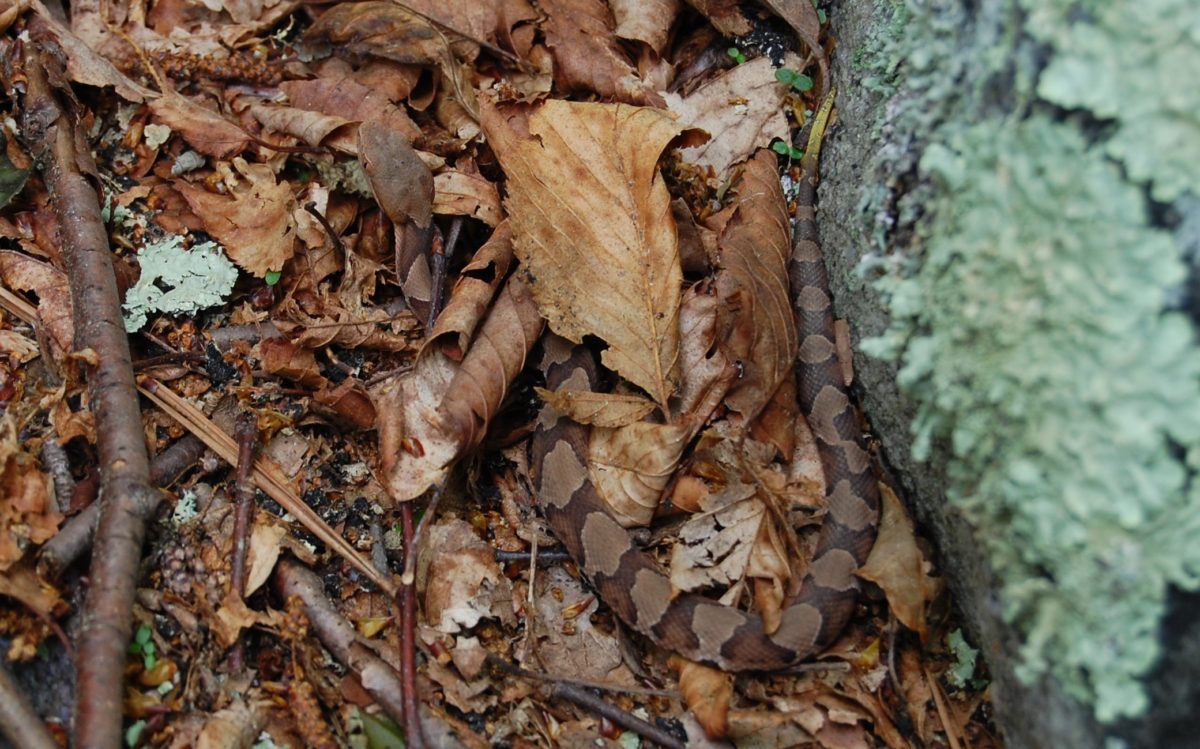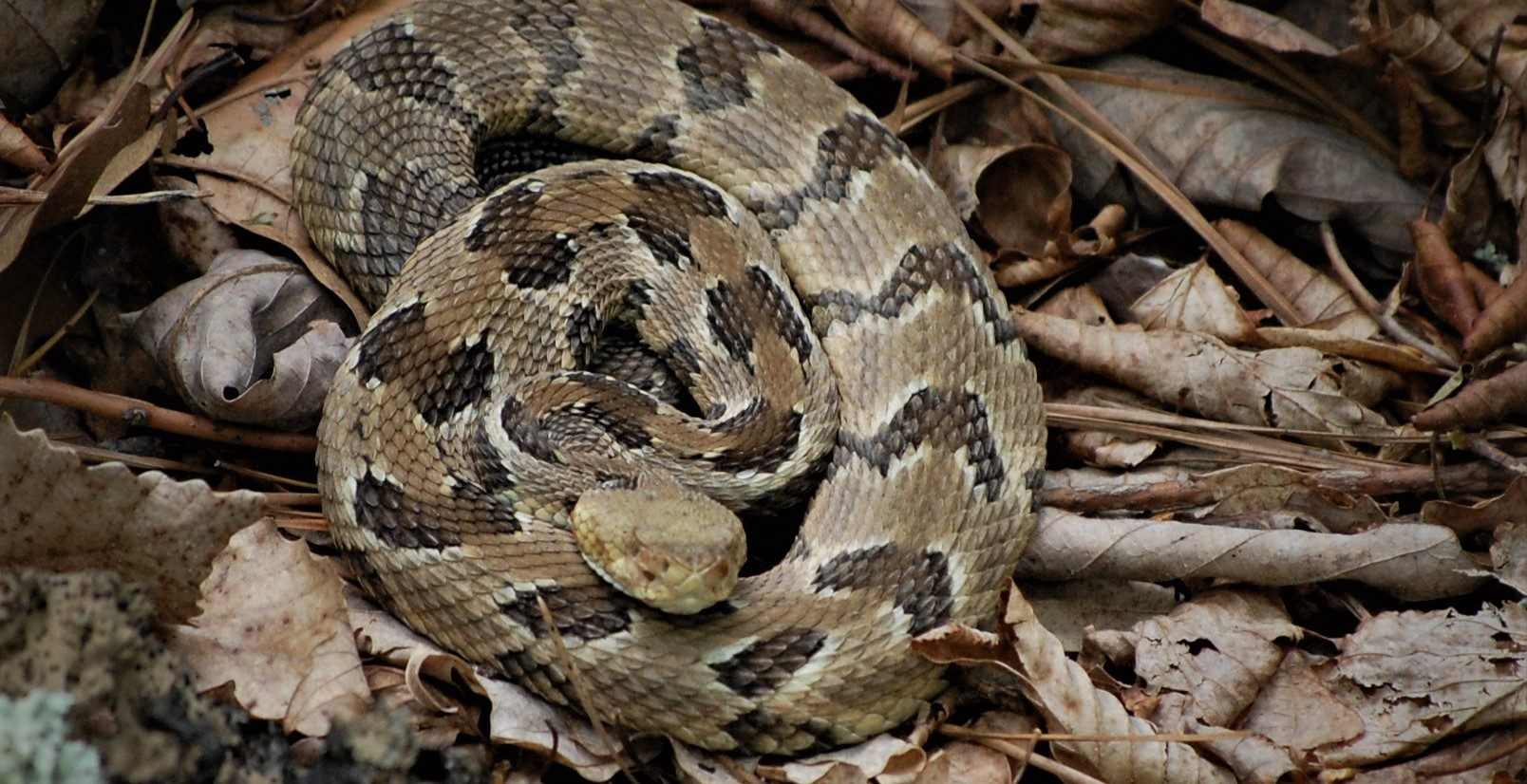Summer time means more people are hitting the trails, loading up the RV or driving to one of Maryland’s many parks and campgrounds. Snakes can be a commonly encountered animal on the trail, identifying species can be difficult for those not used to seeing the variety of native snakes in Maryland.
Maryland is home to 27 species of snakes according to the Maryland Dept. Of Natural resources. Only two of those species are venomous. Most snakes we see are non-venomous, with Rat snakes, Garter snakes and Water snakes being the most encountered snakes even in urban areas.
Our two venomous species are the Timber Rattlesnake Crotalus horridus, and the Copperhead Agkistrodon contortrix. Both species are very shy and stay away from humans if possible.

Most of the time when people see “copperheads,” they are seeing another similarly colored species of non-venomous snake. Copperheads are not nearly as common as people believe they are. Unfortunately, many harmless snakes are killed every year when they are mistaken for copperheads. Copperheads are pit vipers and possess a heat sensing pit between the eye and the nostril, this along with the use of their forked tongue enable them to sense prey and make quick accurate strikes. They are most commonly found on rocky hillsides, and river valleys with lots of cover. They can be found across the state but are not as common on the coastal plain. Copperheads will grow to an average of 36” and are fairly heavy bodied snakes. They feed on frogs and salamanders and large insects such as cicadas as well as small rodents. Copperheads give birth to live young, which have bright yellow or green tail tips. These brightly colored tails are used to lure prey within striking range (caudal luring). Copperhead bites are rare and are not usually fatal to humans or even dogs. However, any venomous snake bite should be treated as a medical emergency.
Timber rattlesnakes are a beautiful and rare snake resident of our mountainous region. Like the copperhead, they give live birth, and have heat sensing pits to prey on mice, rabbits and chipmunks. Timber rattlesnakes den together in communal caves and crevices that are frequently shared with copperheads and non-venomous rat snakes. Timbers can grow to an impressive size of 60” and can be very heavy bodied. The tell-tail rattle is composed of loose sections of modified scales. A section is added with each shed cycle, so older animals can have impressively sized rattles, while newborn snakes have “button” rattles. Timber rattlesnake venom is strong and can result in human fatalities. These snakes, if encountered, should be given the respect they deserve, and observed from a safe distance.

Most venomous snake bites in the US occur when people intentionally try to catch, handle or kill the snakes. To avoid accidental bites, always look before you step or reach when you are in habitat that may support these species. Timber rattlesnakes and copperhead play a vital role in the ecosystem controlling rodent populations and like all snakes in Maryland are protected by law. Yes, it is illegal to kill any snake species in Maryland. As you head out into the wild this summer please keep an eye out for these perfectly camouflaged snakes, to see one is a rare privilege. Take a photo from a safe distance and enjoy their natural beauty.

